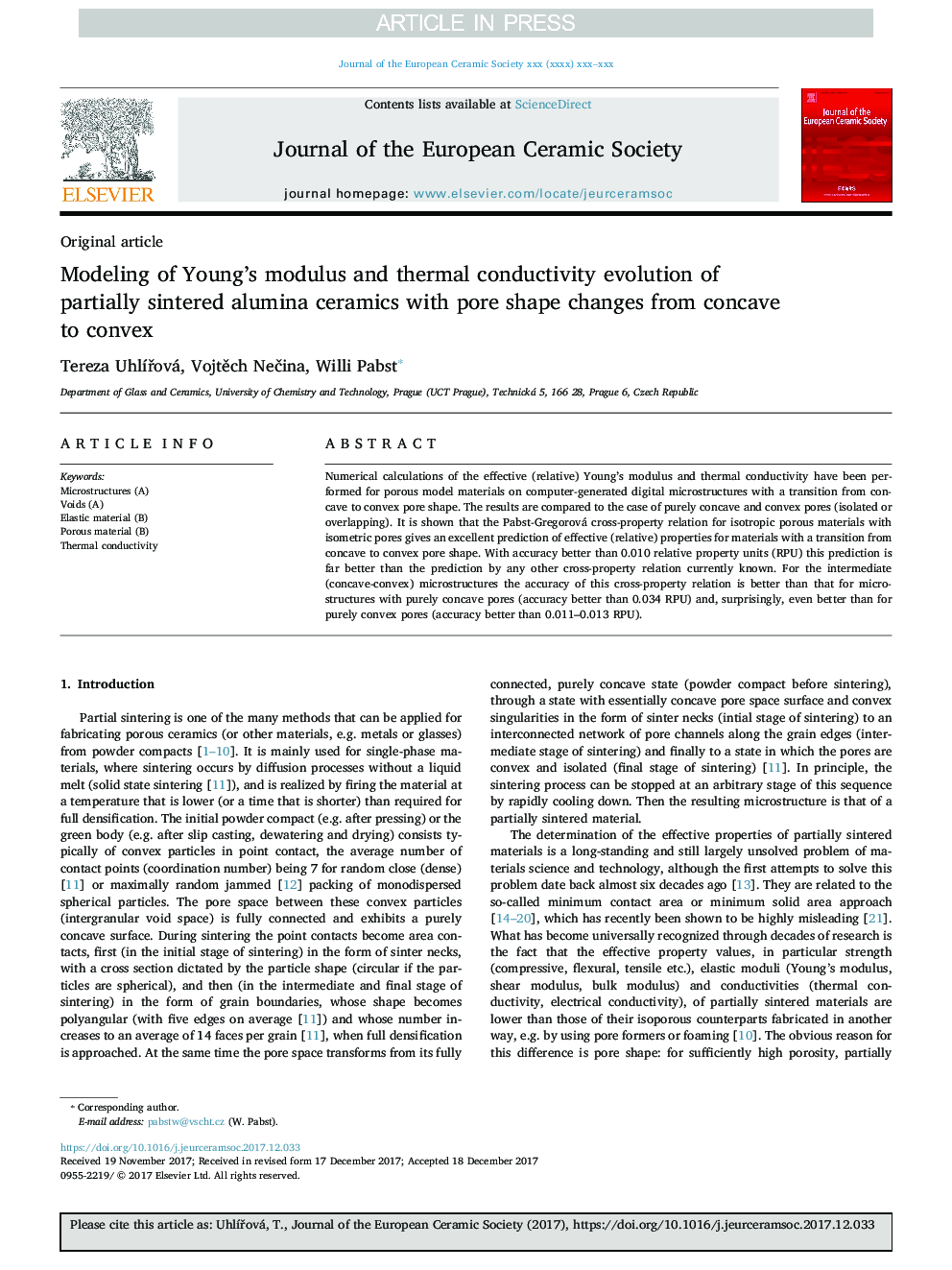| Article ID | Journal | Published Year | Pages | File Type |
|---|---|---|---|---|
| 7898235 | Journal of the European Ceramic Society | 2018 | 8 Pages |
Abstract
Numerical calculations of the effective (relative) Young's modulus and thermal conductivity have been performed for porous model materials on computer-generated digital microstructures with a transition from concave to convex pore shape. The results are compared to the case of purely concave and convex pores (isolated or overlapping). It is shown that the Pabst-Gregorová cross-property relation for isotropic porous materials with isometric pores gives an excellent prediction of effective (relative) properties for materials with a transition from concave to convex pore shape. With accuracy better than 0.010 relative property units (RPU) this prediction is far better than the prediction by any other cross-property relation currently known. For the intermediate (concave-convex) microstructures the accuracy of this cross-property relation is better than that for microstructures with purely concave pores (accuracy better than 0.034 RPU) and, surprisingly, even better than for purely convex pores (accuracy better than 0.011-0.013 RPU).
Related Topics
Physical Sciences and Engineering
Materials Science
Ceramics and Composites
Authors
Tereza UhlÃÅová, VojtÄch NeÄina, Willi Pabst,
